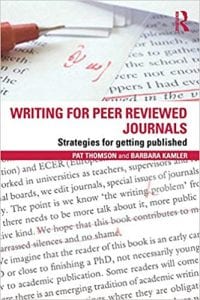(by Sérgio Waitman, Research Associate, Department of Aerospace Engineering)
As I was midway through the book by Pat Thomson and Barbara Kamler, it occurred to me that the choice of the subtitle “Strategies for getting published” might seem a bit misleading. Indeed, as the authors themselves emphasize throughout the text, the objective of the book is not to provide a set of writing guidelines with dos and don’ts and article recipes. Instead, they focus on more conceptual notions about the development of the writer identity and how the text should be seen as part of a conversation among members of a particular scientific community.
The book is mostly aimed towards PhD candidates and early career researchers. The first chapters are of particular interest, as they help inexperienced writers to understand the importance of locating their argument within the body of literature of a given journal as well as that of the scientific community in which it exists. The focus is then not on how to write a good report of results, but on how to put forward an argument that fills in a previously identified gap of knowledge. The author is encouraged to present its paper as another brick in the ever growing research wall, building on previous results and theory, but with a distinctive new take that will allow the wall to keep going up.
The last chapters are more directly related to the writing work per se and provide some good insights into how to put all this in the paper, as well as how to deal with co-authoring duties and feedback from peer review.
My only criticism of the book is its insistent reliance on examples from the field of Education. Even though it is understandable, given the background of both authors and their active research in this area, I would have expected more variability, especially with the extensive experience of the authors in ministering writing workshops around the world. Even though most of what is being said should remain valid and helpful for the majority of academic researchers, it is sometimes hard to appreciate how some of the arguments would be translated to the specificities of different subjects. Nonetheless, I would recommend this book to anyone starting their academic career and struggling to find their voice in the scientific discussion.


